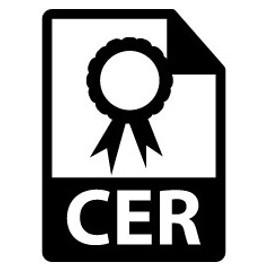100% HTTPS in the internet? Non-Profit makes it possible!

HTTPS on 100% of websites in the internet? This just has gotten a lot easier!
Let’s Encrypt is a free, automated, and open certificate authority (CA), run for the public’s benefit. Let’s Encrypt is a service provided by the Internet Security Research Group (ISRG), a Section 501(c)(3) Non-Profit entity dedicated to reduce financial, technological, and education barriers to secure communication over the Internet.
Let’s Encrypt offers free-of-cost certificates that can be used for HTTPS websites, even when these websites are ran for commercial purposes. Unlike traditional CA’s they don’t require cumbersome registration, paperwork, set-up and payment. The certificates are fetched in an automated way through an API (the ACME Protocol — Automatic Certificate Management Environment), which includes steps to prove that you have control over a domain.
Dedicated to transparency, generated certificates are registered and submitted to Certificate Transparency logs. Here is the generous legal Subscriber Agreement.
Automated API? This sounds too complicated! It is actually not. There are a number of API libraries and clients available that do the work for you. One of them is Certbot. It is a regular command-line program written in Python and the source code is available on Github.
After downloading the certbot-auto script (see their documentation), fetching certificates consists of just one command line (in this example certs for 3 domains are fetched in one command with the -d switch):
certbot-auto certonly --webroot -w /var/www/example -d example.com -d www.example.com -d blah.example.com
With the -w flag you tell the script where to put temporary static files (a sub-folder .well-known will be created) that, during the API control flow, serve as proof to the CA’s server that you have control over the domain. This is identical to Google’s method of verifying a domain for Google Analytics or Google Webmaster Tools by hosting a static text file.
Eventually, the (already chained, which is nice!) certificate and private key are copied into /etc/letsencrypt/live/example.com/:
fullchain.pem
privkey.pem
Then it is only a matter of pointing your web server (Nginx, Apache, etc.) to these two files, and that’s trivial.
Let’s Encrypt certificates are valid for 90 days. The automatic renewal of ALL certificates that you have loaded to your machine is as easy as …
./certbot-auto renew
… which they suggest should be put into a Cron job, run twice daily. It will renew the certificates just in time. No longer do you have to set a reminder in your calendar to renew a certificate, and then copy-paste it manually!
A bit of a downside is that Let’s Encrypt unfortunately doesn’t support wildcard domain certificates. For these, you still have to pay money to some other CA’s who support them. But in above shown code example, you would generate only 1 certificate for the domains example.com and its two subdomains www.example.com and blah.example.com. The two subdomains are listed in the Subject Alternative Name field of the certificate, which is as close to wildcard subdomains as it gets. But except for SAAS providers and other specialized businesses, not having wildcard certificates should not be too big of an issue, especially when one can automate the certificate setup.
A big Thumbs-up go to the Let’s Encrypt CA, and the ISRG!
Icon made by Freepik from www.flaticon.com